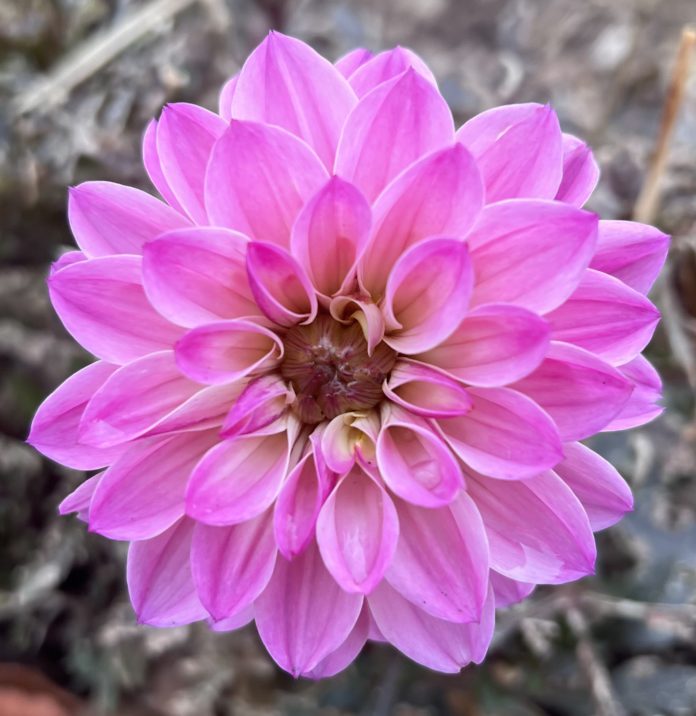I started growing flowers when the idea of growing a bouquet from the garden started to grow on me. The flowers I had been planting until then were mainly to attract bees and butterflies for pollination.
There is so much to choose from when planting flowers in terms of color, size, shape and the type of plant—like bush, creeping, tall, trellising up or down. Over the years, I have grown many flowers, but my favorites in spring and summer are bachelor’s buttons, black eyed susan, cosmos, dahlias, daisies, oriental poppies, sunflowers and zinnias; and my all-time winter and spring favorites are sweet peas and tulips.
I like black eyed susans for their stark appearance and low water consumption. Bachelor’s buttons and cosmos add a cottage vibe to the garden. Zinnias are long lasting and require almost no maintenance. And of course, sweet peas for the perfume they fill the air with. I interplant compact varieties of marigolds with vegetables to act as ground cover to retain moisture.
All of these flowers bloom almost non-stop for a continuous show in the garden. And as cut flowers they decorate the indoors. Gardeners can grow flowers as a border; in a window box, raised bed or container; scattered throughout the yard; under a tree or interplanted with vegetables. Site selection depends on the desired look.
Select a location that gets full sun, or blooms might not be as big and plentiful. A site that offers good air circulation is crucial to prevent diseases like powdery mildew that can attack the leaves as the plant matures. Zinnias and sunflowers can easily fall victim to it.
Flowering plants can be started indoors or directly at the site. I use all methods—starting seeds indoors, direct sowing and allowing the seeds to self-seed depending upon the type of flower and location. I prefer growing ones that can be seeded directly at the site I want to grow them as it saves me time, space and work. When direct sowing, I plant two seeds together, and once they germinate, I thin out the weaker plant. For zinnias, sunflowers and sweet peas, most of these methods work.
If you are planting only a few seeds, it is better to start them in starter pots and then transplant to reduce the risk of them getting washed away or eaten by birds. Transplants can be planted when they are about three inches tall, have been hardened off, and the last chance of frost has passed. For spacing between plants, follow the guidelines on the seed packets.
I also direct sow the seeds in containers if that is the plants’ final destination. If planting more than one kind of flower in a container, make sure to have seeds that have similar germination conditions and water and sun requirements as they grow. Soil that has been mixed with well-aged manure or compost gives plants a great start and supports them as they grow.
Once plants start to bloom, I feed the flowers every two weeks with a fertilizer that encourages blooms during the growing season. Continuously removing the spent flowers not only allows for bountiful blooms by keeping the plant’s energy going towards producing flowers, but also manages the spread of seeds.
The plants mentioned here are annuals, meaning they will complete their life cycle in one year and start to die down. Then it is time to think about collecting seeds to plant next season. When I want to be a laid-back gardener, I let the flowers fully dry on the plant, and in this process, some seeds fall on the ground. The hope is that some will germinate next season and the plants will show up. Black eyed susan and sweet peas have very consistently come back.
At times, self-seeded plants have shown up in surprising places in the garden. I like the charming meadow-like look that letting nature take its own course creates. One thing to keep in mind when allowing the plants to self-seed is to identify the area and leave it undisturbed. Foot traffic, heavy mulch, tilling and running water cause disruption and reduce the chances of sprouting.
While self-seeding is a boon in many ways, some varieties, when they reseed themselves, can produce plants that are short lived or blooms that are not as plentiful. Hybrid varieties may not come back true to their type as the seeds revert to the original variety. Planting heirloom varieties is better in this situation. When I do not want the seeds to self-seed, I let a couple of blooms dry on the plant. Once they are fully dried, I store the seeds in a paper bag or a container in a cool, dry and dark place.
While in botany, flowers serve the reproductive purpose for a plant, they also have deep symbolism that artistic minds have used as metaphors, such as a mother seeing her precious child as a flower. Closer to the physical world, practitioners of traditional medicine use them as cures for various ailments. I, for one, adore and admire flowers as my forever friends that bring joy, smiles and cheer when nothing else can.
Note: This article gives an overview of growing plants, sun and soil requirements, moisture needs etc. Plant health and growth will vary based on various factors. This article is intended for gardening inspiration only. We try our very best to include information from reputable sources.




